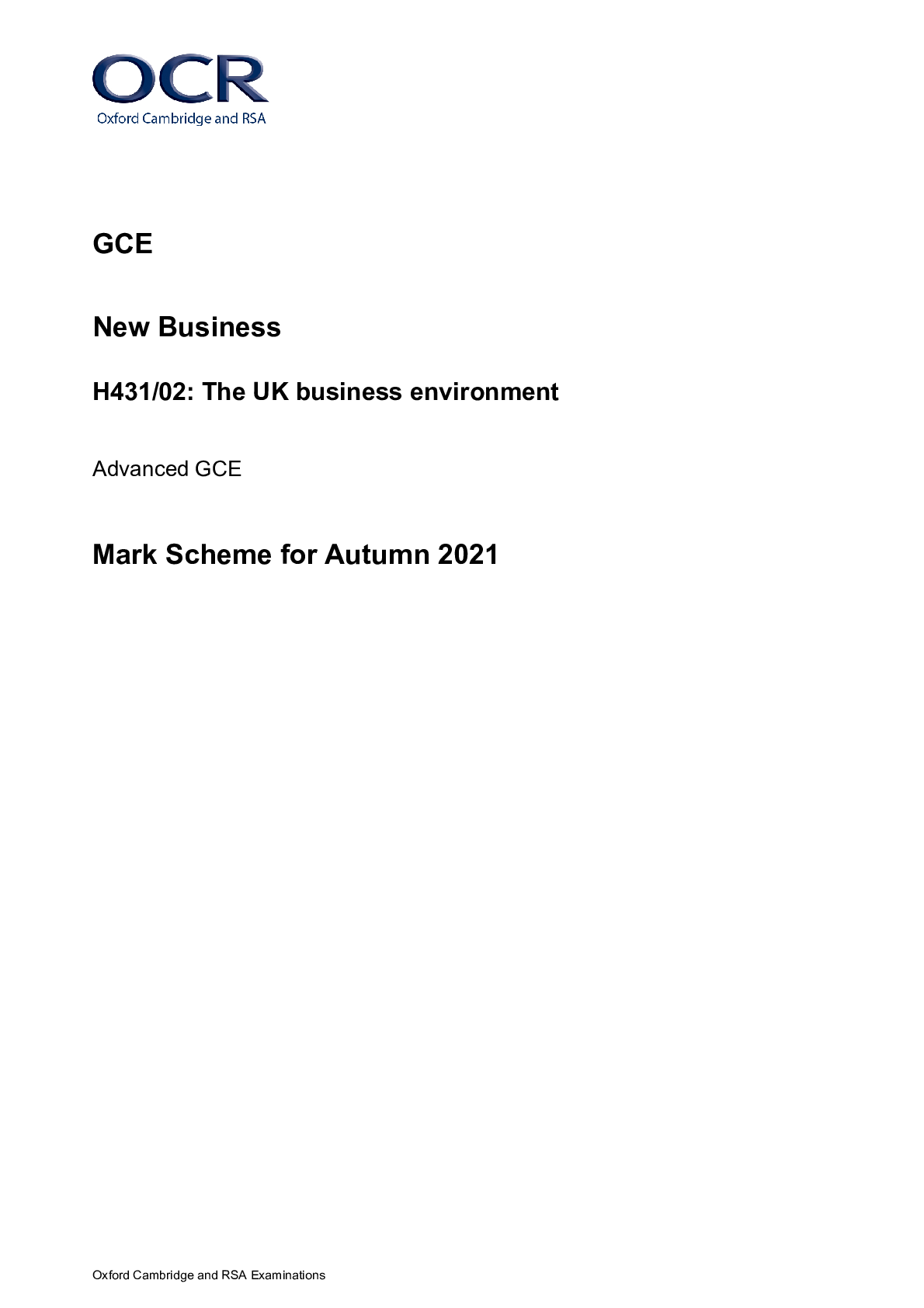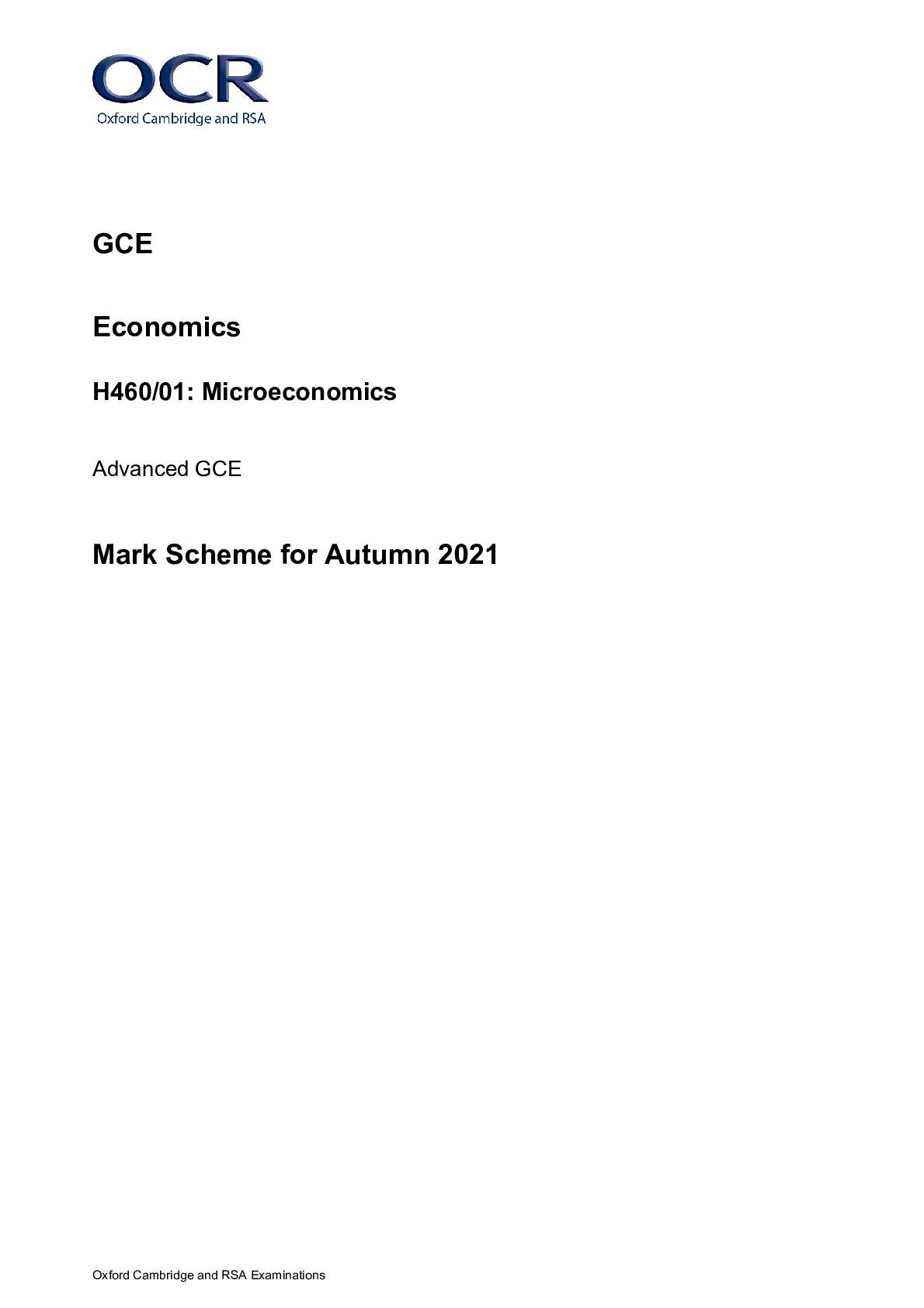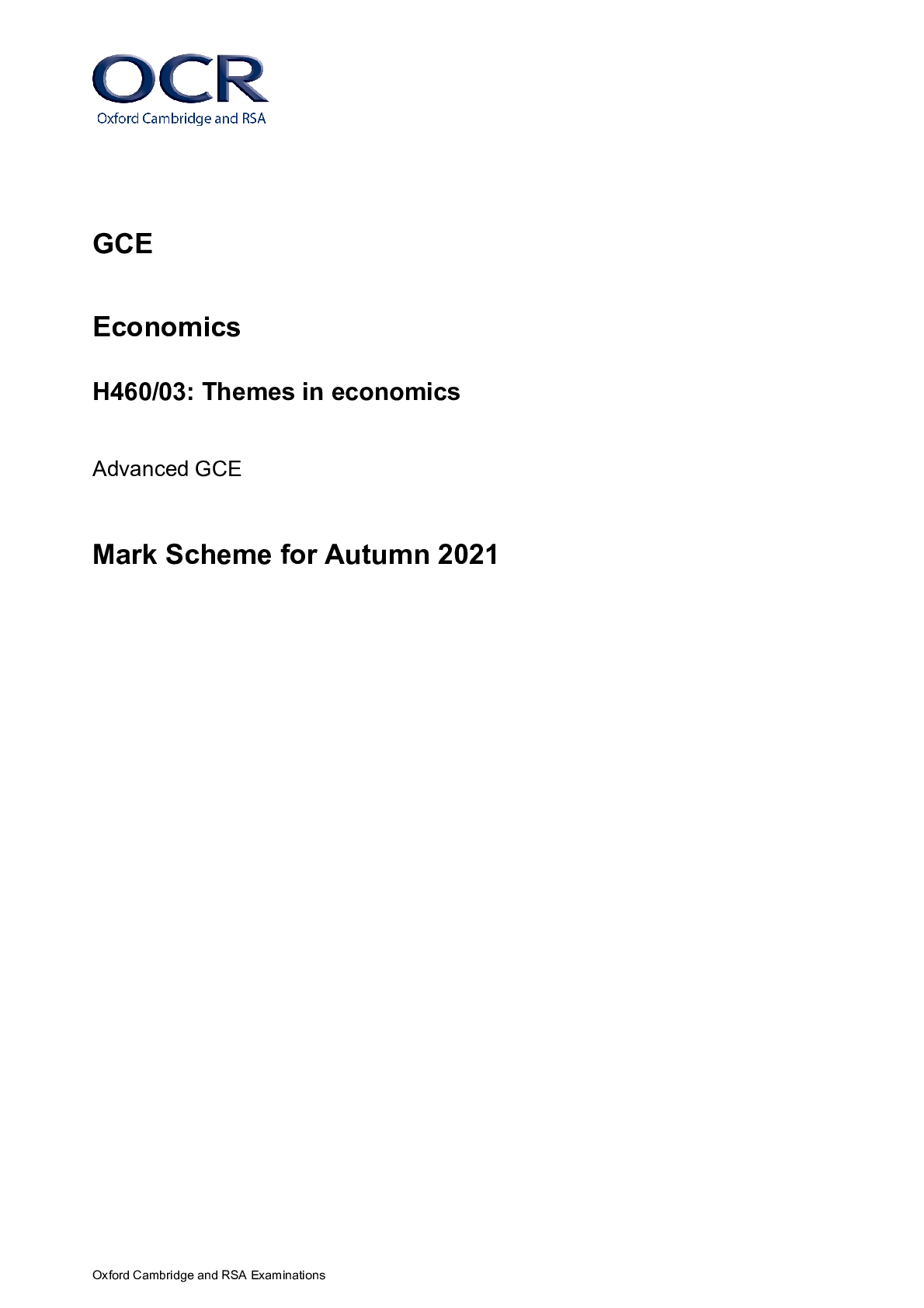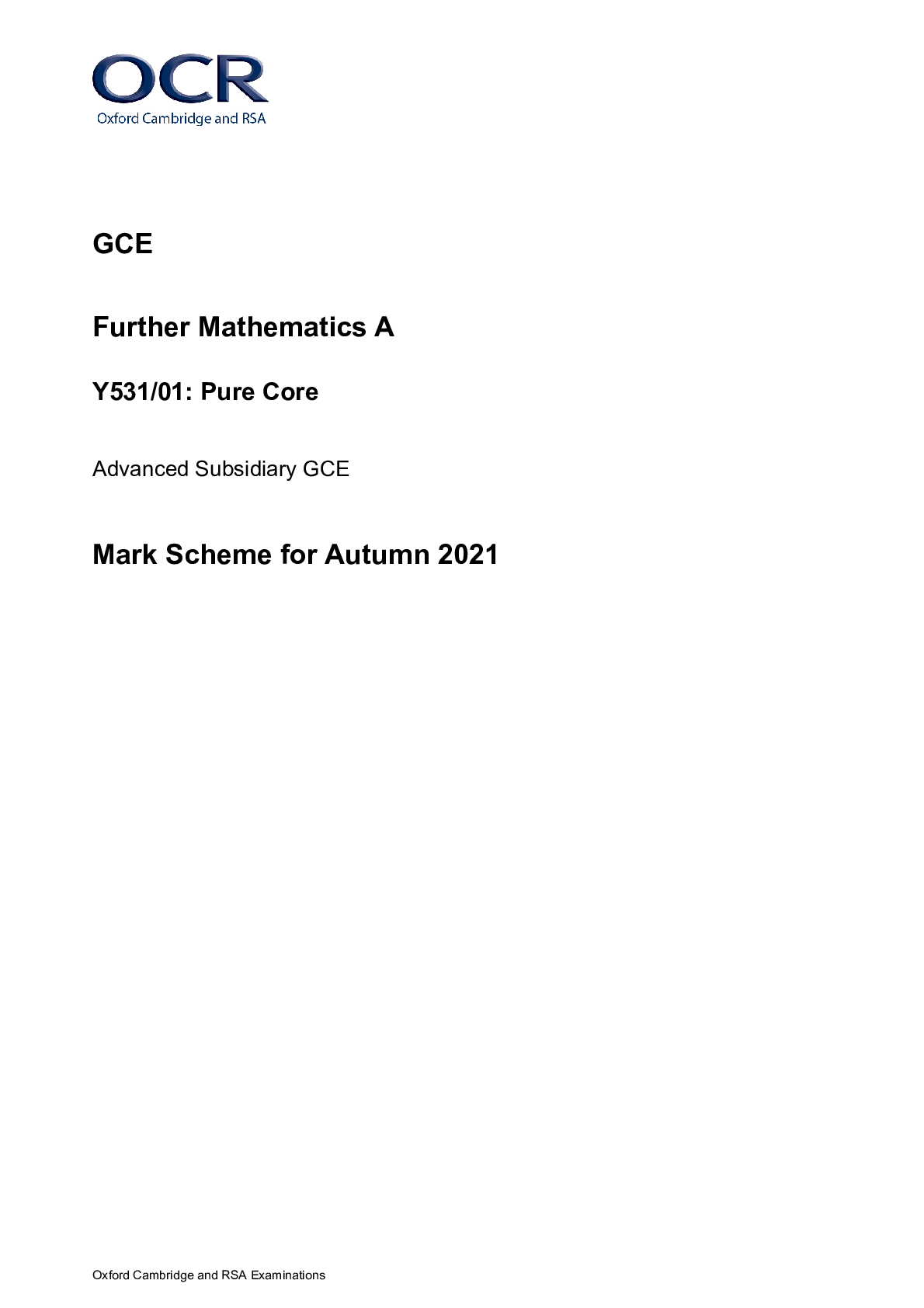Classical Civilisation > MARK SCHEME > GCE Classical Civilisation H008/22: Imperial Image Advanced Subsidiary GCE Mark Scheme for November (All)
GCE Classical Civilisation H008/22: Imperial Image Advanced Subsidiary GCE Mark Scheme for November 2020
Document Content and Description Below
GCE Classical Civilisation H008/22: Imperial Image Advanced Subsidiary GCE Mark Scheme for November 2020 Oxford Cambridge and RSA Examinations GCE Classical Civilisation H008/22: Imperia... l Image Advanced Subsidiary GCE Mark Scheme for November 2020Oxford Cambridge and RSA Examinations OCR (Oxford Cambridge and RSA) is a leading UK awarding body, providing a wide range of qualifications to meet the needs of candidates of all ages and abilities. OCR qualifications include AS/A Levels, Diplomas, GCSEs, Cambridge Nationals, Cambridge Technicals, Functional Skills, Key Skills, Entry Level qualifications, NVQs and vocational qualifications in areas such as IT, business, languages, teaching/training, administration and secretarial skills. It is also responsible for developing new specifications to meet national requirements and the needs of students and teachers. OCR is a not-for-profit organisation; any surplus made is invested back into the establishment to help towards the development of qualifications and support, which keep pace with the changing needs of today’s society. This mark scheme is published as an aid to teachers and students, to indicate the requirements of the examination. It shows the basis on which marks were awarded by examiners. It does not indicate the details of the discussions which took place at an examiners’ meeting before marking commenced. All examiners are instructed that alternative correct answers and unexpected approaches in candidates’ scripts must be given marks that fairly reflect the relevant knowledge and skills demonstrated. Mark schemes should be read in conjunction with the published question papers and the report on the examination. © OCR 2020H008/22 Mark Scheme November 2020 2 Annotations Symbol Description Comment Tick worthy of credit ? unclear S error of spelling E error of grammar, punctuation or expression F error of fact ^ omission H Line to draw an attention to an error V Wavy Line to draw attention to something H Wavy Line to draw attention to something ……… Highlight as directed by PE REL irrelevant point REP conspicuous repetitionH008/22 Mark Scheme November 2020 3 L illegible word or phrase BP Blank Page – this annotation must be used on all blank pages within an answer booklet and on each page of an additional object where there is no candidate response.H008/22 Mark Scheme November 2020 4 Question Indicative Content Marks Guidance Section A 1 (a) Identify the structure on which Image 1 of Livia is found. • Ara Pacis (1) 1 (AO1) 1(b) Why do you think Livia is shown on the structure in Image 1? • She is part of the Imperial Family who are shown on the panel. (1) • She is wife of Augustus and should be expected to be included. (1) • She is part of the depiction of the ideal family. (1) 1 (AO2) Any relevant reason should be credited. 2 Of what material is the head of Livia made, as shown in Image 2? • (Egyptian) basanite. (1) 1 (AO1) Not marble 3 Explain what impression of Livia is created by the images in Source A. Make four points. You should make at least one point on each image. Support each point with reference to the images in Source A. Accept any four points and award up to two marks each. Assess against point-bypoint marking grid below. 2 expresses a valid point, with accurate, relevant and suitably explained reference to the passage. 1 expresses a valid point, but is not fully supported by an appropriate selection evidence from the passage. 0 Point is not valid, or none are drawn 4 (AO1) 4 (AO2) AO1 marks are awarded for the selection of material from the source. AO2 marks for the interpretation, analysis and evaluation of this outlined in the Levels of Response grid. The indicative content is a description of possible content. All legitimate answers and approaches must be credited appropriately.H008/22 Mark Scheme November 2020 5 Question Indicative Content Marks Guidance Examples might include: • On the ara pacis Livia is shown to be respectful of religious practices. (AO2) o Her head is covered. (image 1 AO1) o Her expression is serious/demure. (image 1 AO1) o Expression is serious. (image 2 AO1) • She is matronly and her body is covered for modesty as an example to women. (AO2) o Livia’s clothes are heavy not sheer. (image 1 AO1) o Livia is dressed as a Roman matron. (image 1 AO1) o Most of her body is covered. (image 1 AO1) o She has a bun at the back. (image 2 AO1 • Her features are not over flattering but realistic showing her to be an “ordinary woman”. (AO2) o Her expression is serious/demure. (image 1 AO1) o Details of realism. (image 2 AO1) • In both images she lacks any emotion which was the style of portraiture of the time. However, some may feel that she appears rather cold. (AO2) o Her expressions is serious/demure. (image 1 AO1) o Expression is serious. (image 2 AO1) o Her hair is tied back. (image 2 AO1) However, some many regard her features as not showing her in her best lightthese should be credited.H008/22 Mark Scheme November 2020 6 Question Indicative Content Marks Guidance 4 Who was Hercules (line 2)? Make two points. • A Greek superhero. (1) • Performed 12 labours. (1) • One of his labours was in Spain. (1) • Son of Zeus (1) 2 (AO1) Any two points relevant to Hercules. Accept spelling Heracles. Accept reference to Hercules being at Troy 5 Give the name of ‘our famous leader’s sister’ (line 7). • Octavia. (1) 1 (AO1) 6 Who was Spartacus (line 20)? • Gladiator. (1) • Slave. (1) • Leader of slave revolt/ Leader in Servile Wars. (1) 1 (AO1) All legitimate answers should be credited. 7 Why do you think Horace chose to write as Ode to Augustus? • To flatter Augustus. (1) • To be grateful for his links to Augustus. (1) • Poets were expected to praise the emperor. (1) • He is linked to Maecenas. (1) 1 (AO2) All legitimate answers should be credited. Not: that Rome will be safe under Augustus and Livia.H008/22 Mark Scheme November 2020 7 8 Explain how successfully Horace shows in Source B that Rome will be safe under Augustus and Livia. Make four points and support each point with reference to Source B. Accept any four points and award up to two marks each. Assess against point-bypoint marking grid below. Examples might include: Example of analytical or evaluative comment (AO2). • Effect of choice of hero on audience to reassure. (AO2) o Reference to Hercules. (AO1) • Actions taken by Augustus to secure peace. (AO2) o Conquering Caesar. (AO1) • Actions of Livia to show religious observances will keep the gods happy and ensure peace. (AO2) o All dressed in holy ribbons. (AO1) • Contrast of war and peace. Feeling of safety. (AO2) o Now safe and sound. (AO1) o I’ll not fear civil war/ Nor sudden death. (AO1) • Optimism for the future. (AO2) o I’ll not fear civil war. (AO1) 2 expresses a valid point, with accurate, relevant and suitably explained reference to the passage. 1 expresses a valid point, but is not fully supported by an appropriate selection evidence from the passage. 0 Point is not valid, or none are drawn 4 (AO1) 4 (AO2) AO1 marks are awarded for the selection of material from the source. AO2 marks for the interpretation, analysis and evaluation of this outlined in the Levels of Response grid. The indicative content is a description of possible content. All legitimate answers and approaches must be credited appropriately.H008/22 Mark Scheme November 2020 8 Question Indicative Content Marks Guidance 9* ‘Women are excellent role models for Roman Society.’ Explain how far Sources A and B show that Augustus would have agreed with this statement. You may use Source A and/or Source B as a starting point in your answer. AO1 Candidates might show knowledge and understanding of: • Sources A- and other images from the Ara Pacis. • Source B- literary reference. • Horace: Odes 1.37; Carmen Saeculare. • Chapters of Suetonius: 64. • Propertius 3.11. AO2 Candidates may demonstrate evaluation and analysis through the use of: Role models: • Ara Pacis has women included to give the impression that Augustus family were a united family. Ara Pacis shows that the imperial family were religious. (accept: They all look, by modern standards as if they are equal.) • Girls appear equal in the Carmen Saeculare. • Propertius recognizes the power of women. • Women do not do the same things as men but may be regarded as equally valued. BUT • Negative impression of Cleopatra. • Propertius recognises the negative power of women. • Suetonius tells how the women could weave but not much on their governing! • His daughter and granddaughter were banished for adultery showing that the family was not all treated the same. 8 (AO1) 8 (AO2) The indicative content is a description of possible content only; all legitimate answers and approaches must be credited appropriately. Assess using the marking grids for the 20-mark extended response. Whilst candidates may use the provided source as a starting point, they should not be penalised if they offer a full and detailed response which does not do so. Credit knowledge of Women in Roman SocietyH008/22 Mark Scheme November 2020 9 Section B Question Indicative Content Marks Guidance 10* ‘Augustus used other men, not just himself, to achieve a positive imperial image.’ Explain to what extent you agree with this statement, using the sources you have studied. AO1 Other men who may be mentioned are: • Julius Caesar- shown in coins, and his deification in Ovid 15.745-842. • Agrippa. • Antony- Horace Odes 1.37. • Maecenas -Horace Epode 9. • Drusus Odes 4.4. • Horace – various supporting odes e.g. 4.15/Ovid/poets. AO2 • Augustus claimed legitimacy for himself through his link to Julius Caesar. The deification of Julius Caesar meant Augustus could claim divinity. Accept reference to help from the gods, and Venus which Romans would have believed at the time. • Augustus relied on Agrippa for his military victories- and success but soon “airbrushed him out” Res Gestae 25. • He relied on comparing himself with Antony to show a positive image of himself. • His paternal image shown through coins of Gaius and Lucius. • Maecenas ensured positive propaganda. • Drusus shows what a great family the Julio-Claudians are. However • He needed to distance himself from the problematic aspects of Julius Caesar. • Augustus could achieve much on his own. • His power over women/children. 10 (AO1) 15 (AO2) The indicative content is a description of possible content only; all legitimate answers and approaches must be credited appropriately.H008/22 Mark Scheme November 2020 10 11* Explain how far the literature you have studied shows that Augustus was a capable military commander. In your answer you should refer to at least three of the following: Horace, Propertius, Ovid, Suetonius and Res Gestae. AO1 Candidates might show knowledge and understanding of: Prescribed authors: • Horace epode 9,1.37,3.14,4.15. • Propertius 3.4,4.6. • Ovid. • Suetonius 9-21. • Res Gestae: 15,21,25,27-32. AO2 Capable • Augustus title imperator. • Poets of the Augustan age tend to show Augustus as a capable commander. These are depicted as glorious and impressive. The Actium spin. • Augustus promotion in the Res Gestae. • Triumphs indicate his great success. • Better responses will appreciate that this does not just involve fighting but how soldiers are treated and the defeated. • Extent to which campaigns were beneficial to those who were conquered. However • Later assessment of Augustus shows some negative points as shown in Suetonius. Candidates should be aware of the reality of military victories and involvement of Agrippa. • Antony and Augustus’ relationship and the realities of the Battle of Actium. • The effect of spin. 10 (AO1) 15 (AO2) The indicative content is a description of possible content only; all legitimate answers and approaches must be credited appropriately.H008/22 Mark Scheme November 2020 11 Guidance on applying the marking grids for the 16-mark extended response Two Assessment Objectives are being assessed in this question: AO1 and AO2.The two Assessment Objectives are equally weighted. Examiners must use a best fit approach to the marking grid. Where there are both strengths and weaknesses in a particular response examiners should carefully consider which level is the best fit for the performance overall. Note that candidates can achieve different levels in each assessment objective, for example a Level 3 for AO1, and a Level 2 for AO2. When using this grid: • Determine the level: start at the highest level and work down until you reach the level that matches the answer • Determine the mark within the level: consider whether the response consistently meets the criteria for the level, and/or could be described as closer to the level above or the one below • Marks for questions must be determined by reference to the assessment grid, NOT by mechanical addition of ticks. AO1 AO2 Level Marks Characteristics of Performance Level Marks Characteristics of Performance 4 7–8 • very detailed knowledge and a thorough understanding of the material studied • use of a range of well selected, accurate and precise material from classical sources, and appropriate, effective use of their cultural context and possible interpretation 4 7–8 • a very good response to the question containing a wide range of relevant points leading to convincing conclusions • points are very well supported by critical perceptive analysis, interpretation and evaluation of classical sources the response is logically structured, with a well-developed and clear line of reasoning 3 5–6 • good knowledge and understanding of the material studied • use of a range of well selected, mostly accurate, material from classical sources, and appropriate use of their cultural context and possible interpretation 3 5–6 • a good response to the question containing a range of relevant points leading to appropriate conclusions • points are generally supported by analysis, interpretation and evaluation of classical sources the response presents a line of reasoning which is mostly relevant and has some structure 2 3–4 • sound knowledge and understanding of the material studied • use of a limited range of material from classical sources with some degree of accuracy, and limited use of their cultural context and possible interpretation 2 3–4 • a sound response to the question containing some relevant points leading to tenable conclusions • some points are supported by analysis, interpretation and evaluation of classical sources the response presents a line of reasoning but may lack structure 1 1–2 • limited knowledge and understanding of the material studied • use of little accurate material from classical sources and little or no use of their cultural context and possible interpretation 1 1–2 • limited engagement with the question, any points or conclusions made may be weak and/or limited in relevancy • isolated use of classical sources with little analysis, interpretation and evaluation the information is communicated in an unstructured way 0 0 No response worthy of credit 0 No response worthy of creditH008/22 Mark Scheme November 2020 12 Guidance on applying the marking grids for the 25-mark extended response Two Assessment Objectives are being assessed in this question: AO1 and AO2.The two Assessment Objectives are equally weighted. Examiners must use a best fit approach to the marking grid. Where there are both strengths and weaknesses in a particular response examiners should carefully consider which level is the best fit for the performance overall. Note that candidates can achieve different levels in each assessment objective, for example a Level 3 for AO1, and a Level 2 for AO2. When using this grid: • Determine the level: start at the highest level and work down until you reach the level that matches the answer • Determine the mark within the level: consider whether the response consistently meets the criteria for the level, and/or could be described as closer to the level above or the one below AO1 AO2 Level Marks Characteristics of Performance Level Marks Characteristics of Performance 5 9–10 • very detailed knowledge and a thorough understanding of the material studied • use of a range of well selected, accurate and precise material from classical sources, and appropriate, effective use of their cultural context and possible interpretation 5 13–15 • a very good response to the question containing a wide range of relevant points leading to convincing conclusions • points are very well supported by critical perceptive analysis, interpretation and evaluation of classical sources the response is logically structured, with a well-developed, sustained and coherent line of reasoning 4 7–8 • detailed knowledge and a sound understanding of the material studied • use of a range of well selected, mostly accurate, material from classical sources, and appropriate use of their cultural context and possible interpretation 4 10–12 • a good response to the question containing a range of relevant points leading to appropriate conclusions • points are consistently supported by critical analysis, interpretation and evaluation of classical sources the response is logically structured, with a well-developed and clear line of reasoning 3 5–6 • reasonable knowledge and understanding of the material studied • use of a range of mostly accurate material from classical sources, and some use of their cultural context and possible interpretation 3 7–9 • a reasonable response to the question containing some relevant points leading to tenable conclusions • points are generally supported by analysis, interpretation and evaluation of classical sources the response presents a line of reasoning which is mostly relevant and has some structure 2 3–4 • basic knowledge and understanding of the material studied • use of a limited range of material from classical sources with some degree of accuracy, and limited use of their cultural context and possible interpretation 2 4–6 • a basic response to the question containing some points, which may be narrow in scope and limited in relevancy, leading to weak conclusions • points are occasionally supported by analysis, interpretation and evaluation of classical sources the response presents a line of reasoning but may lack structure 1 1–2 • limited knowledge and understanding of the material studied • use of little accurate material from classical sources and little or no use of their cultural context and possible interpretation 1 1–3 • little engagement with the question and any points or conclusions made are of little or no relevance • isolated use of classical sources with little analysis, interpretation and evaluation the information is communicated in an unstructured way 0 no response worthy of credit 0 no response worthy of creditOCR (Oxford Cambridge and RSA Examinations) The Triangle Building Shaftesbury Road Cambridge CB2 8EA [Show More]
Last updated: 1 year ago
Preview 1 out of 14 pages
Instant download
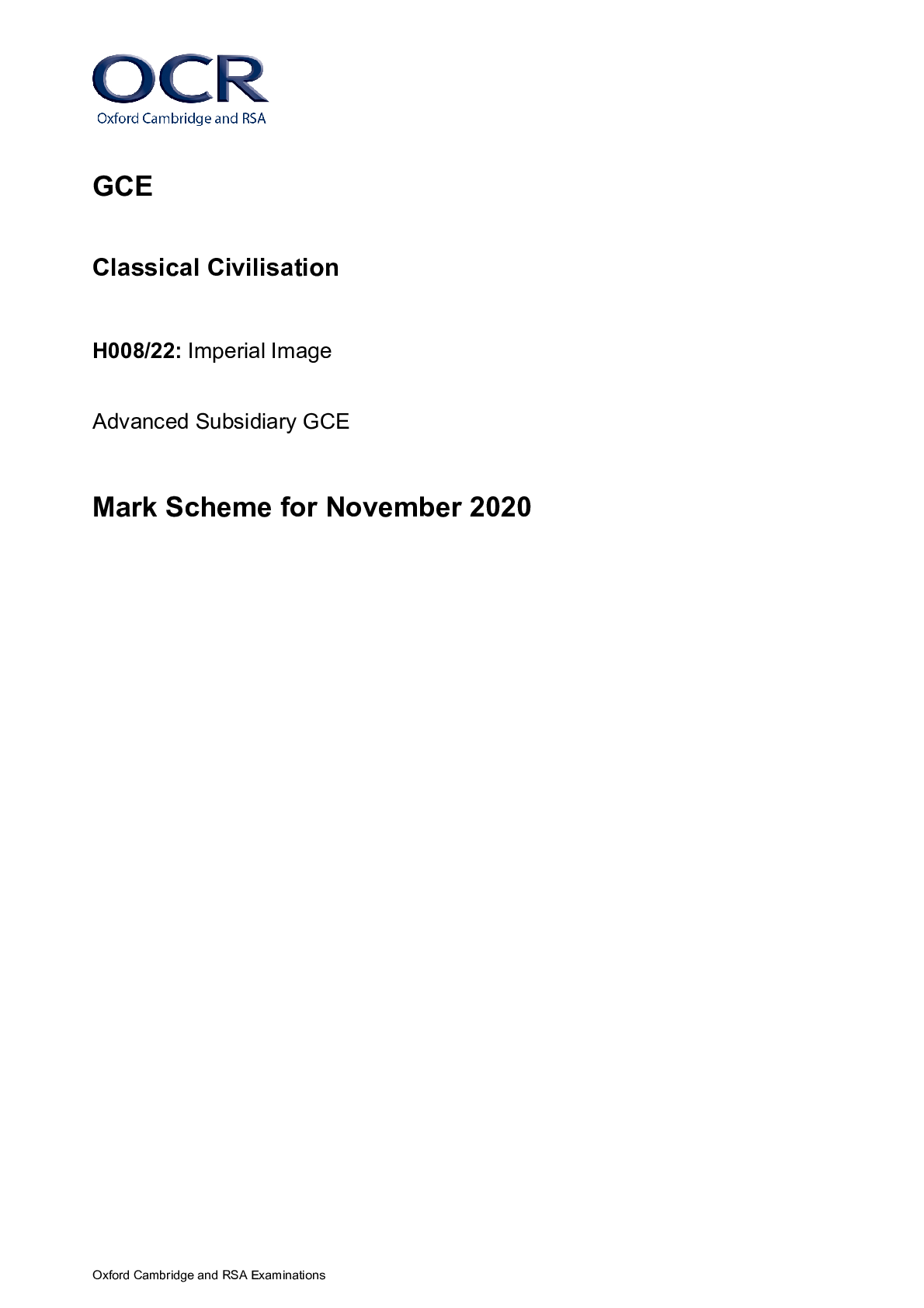
Buy this document to get the full access instantly
Instant Download Access after purchase
Add to cartInstant download
Reviews( 0 )
Document information
Connected school, study & course
About the document
Uploaded On
Oct 07, 2022
Number of pages
14
Written in
Additional information
This document has been written for:
Uploaded
Oct 07, 2022
Downloads
0
Views
54


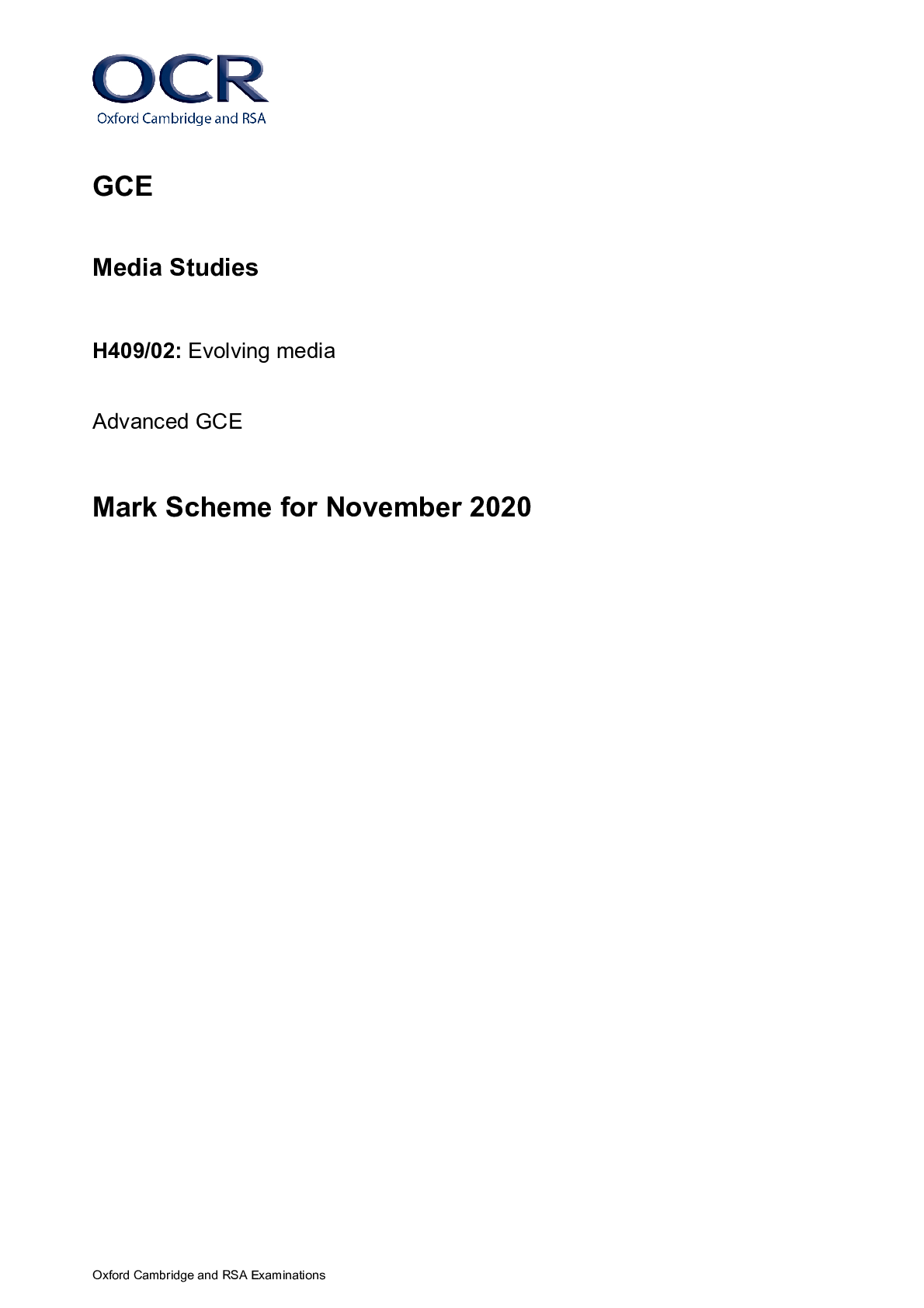
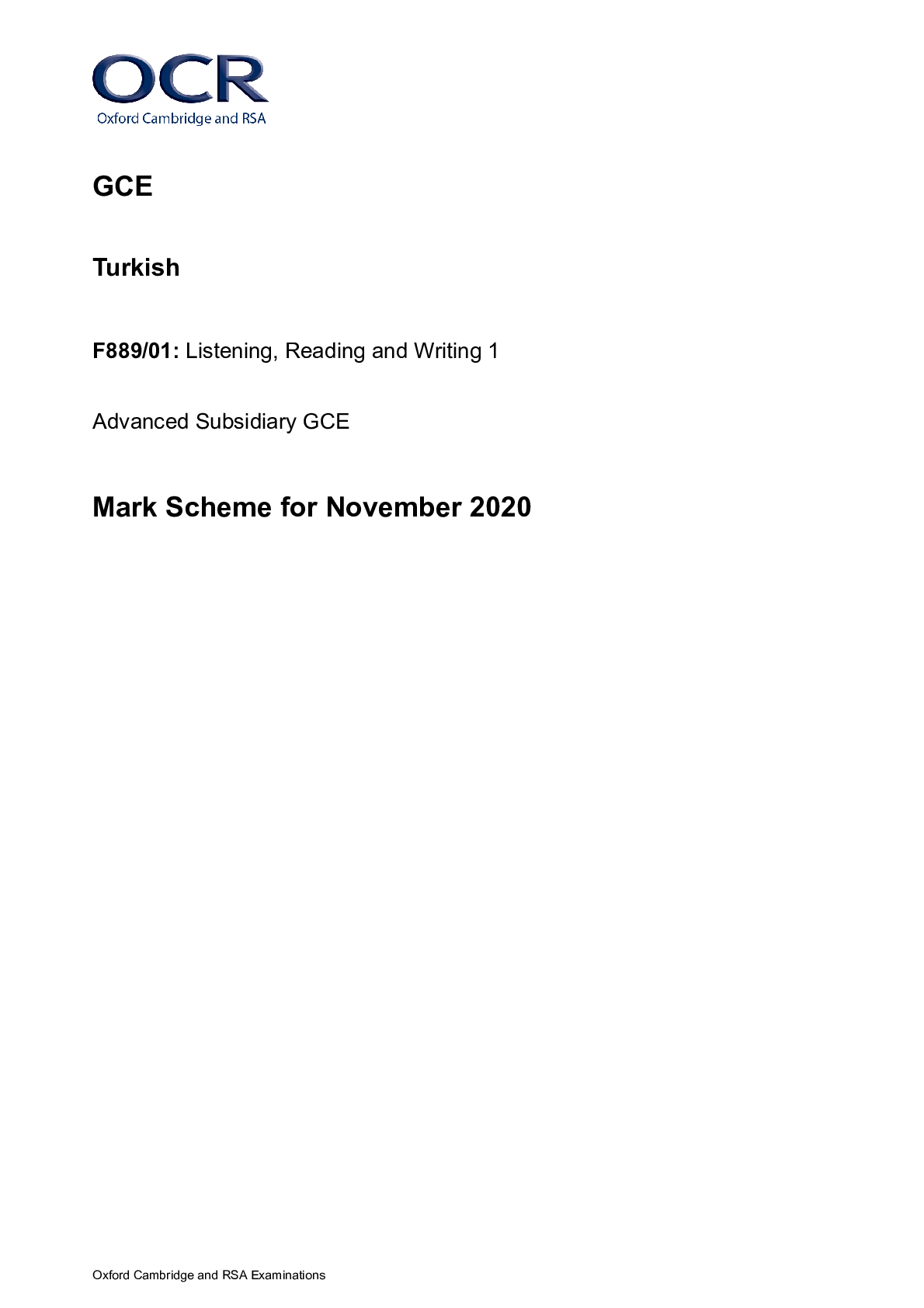
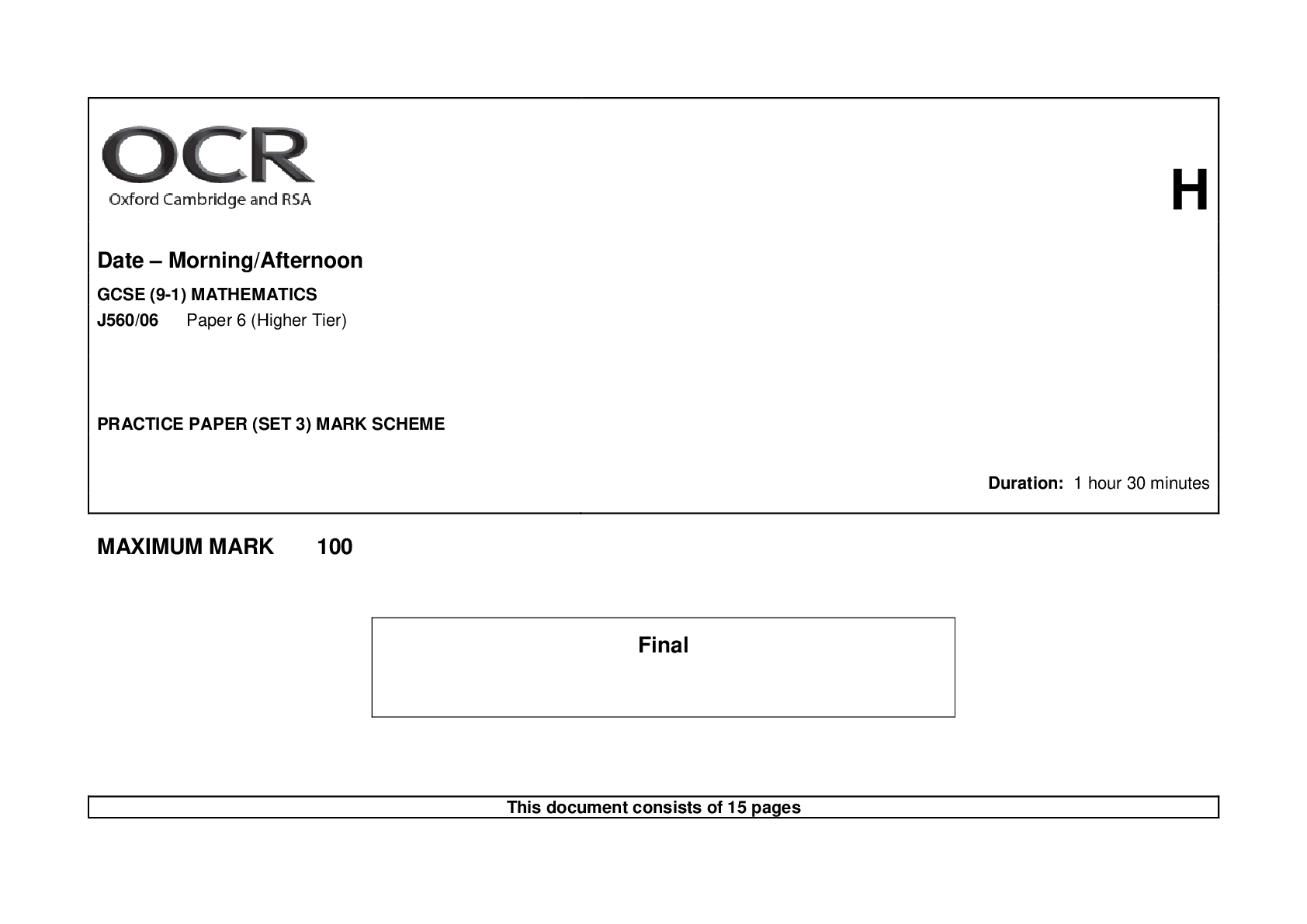


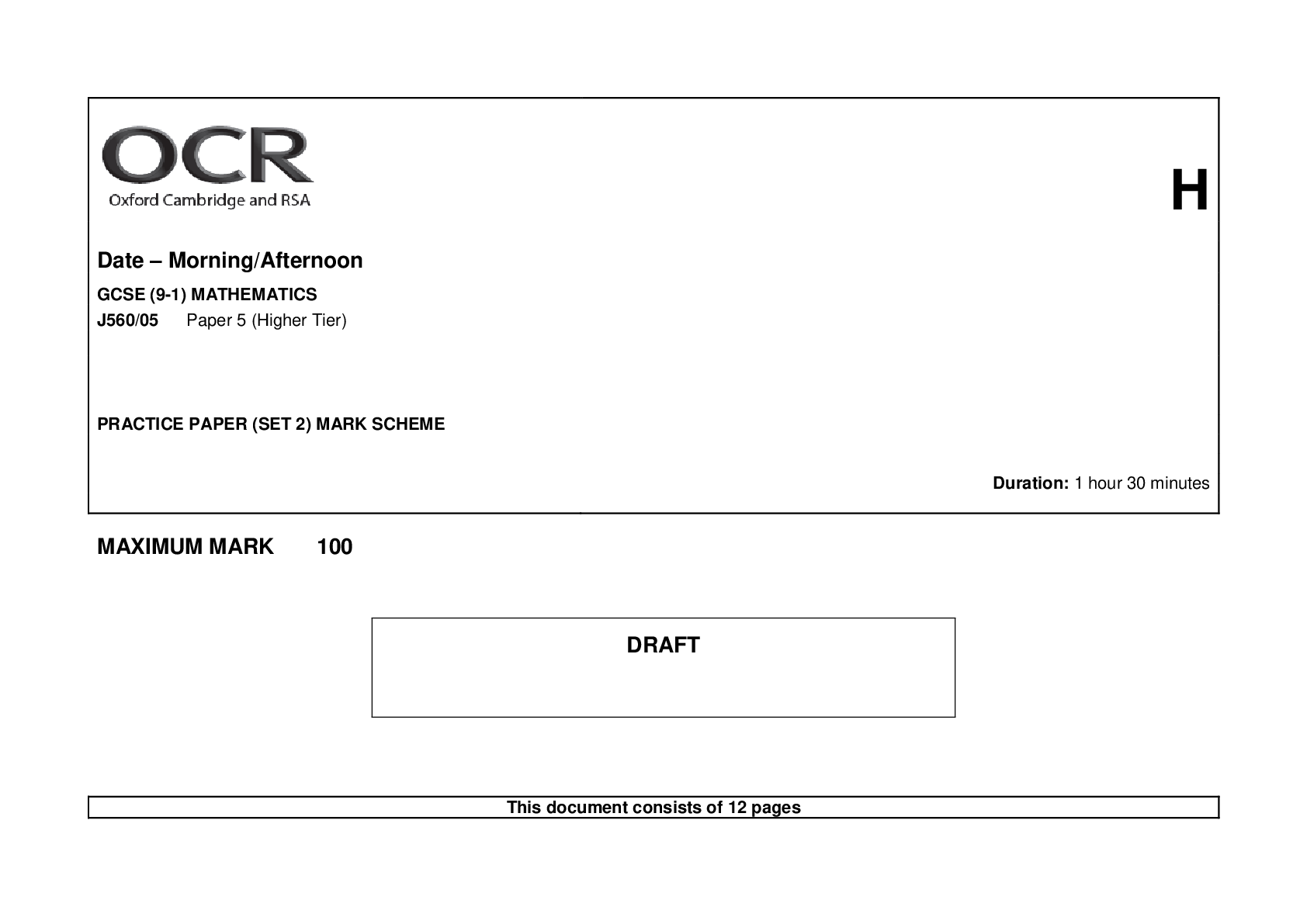
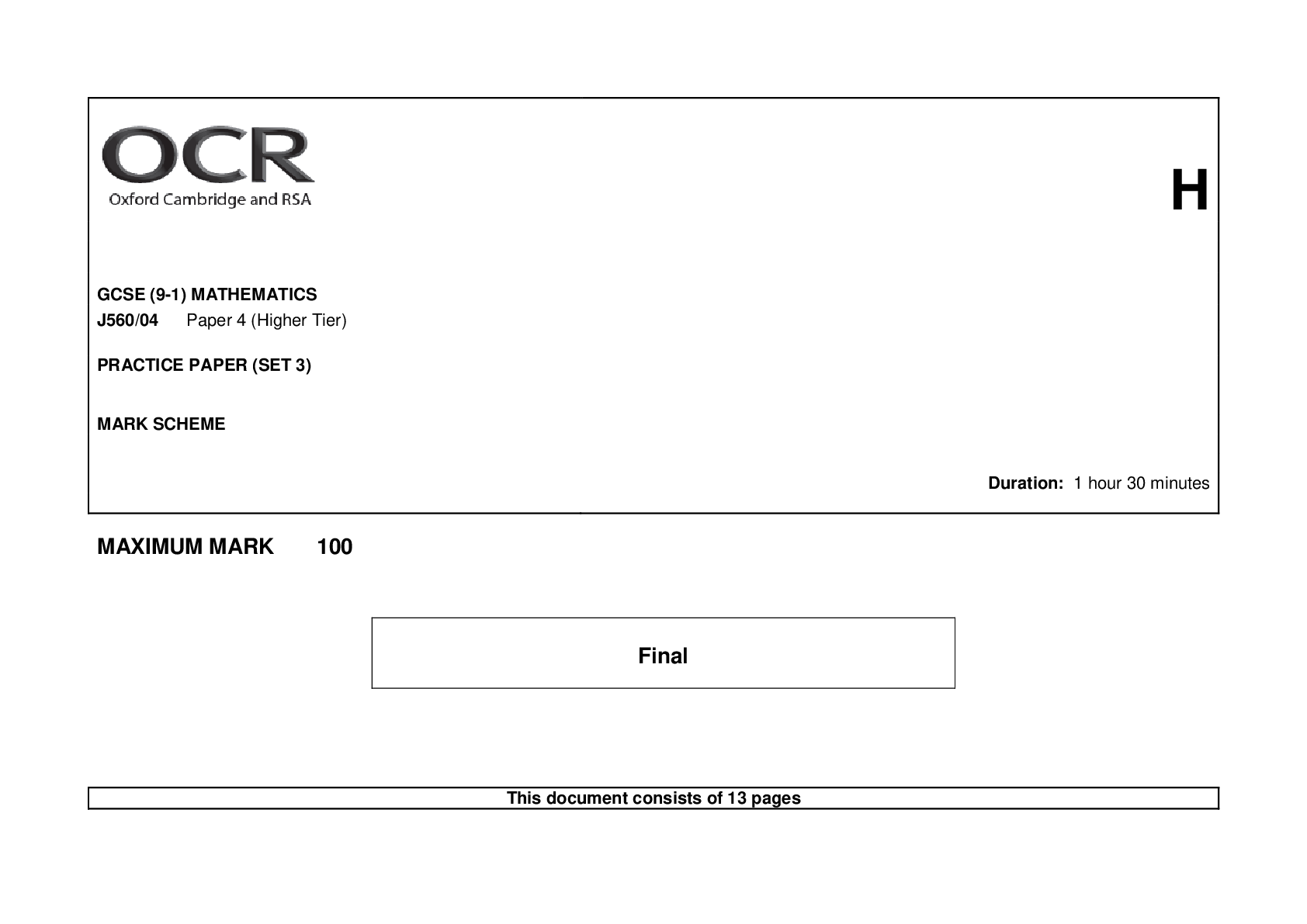



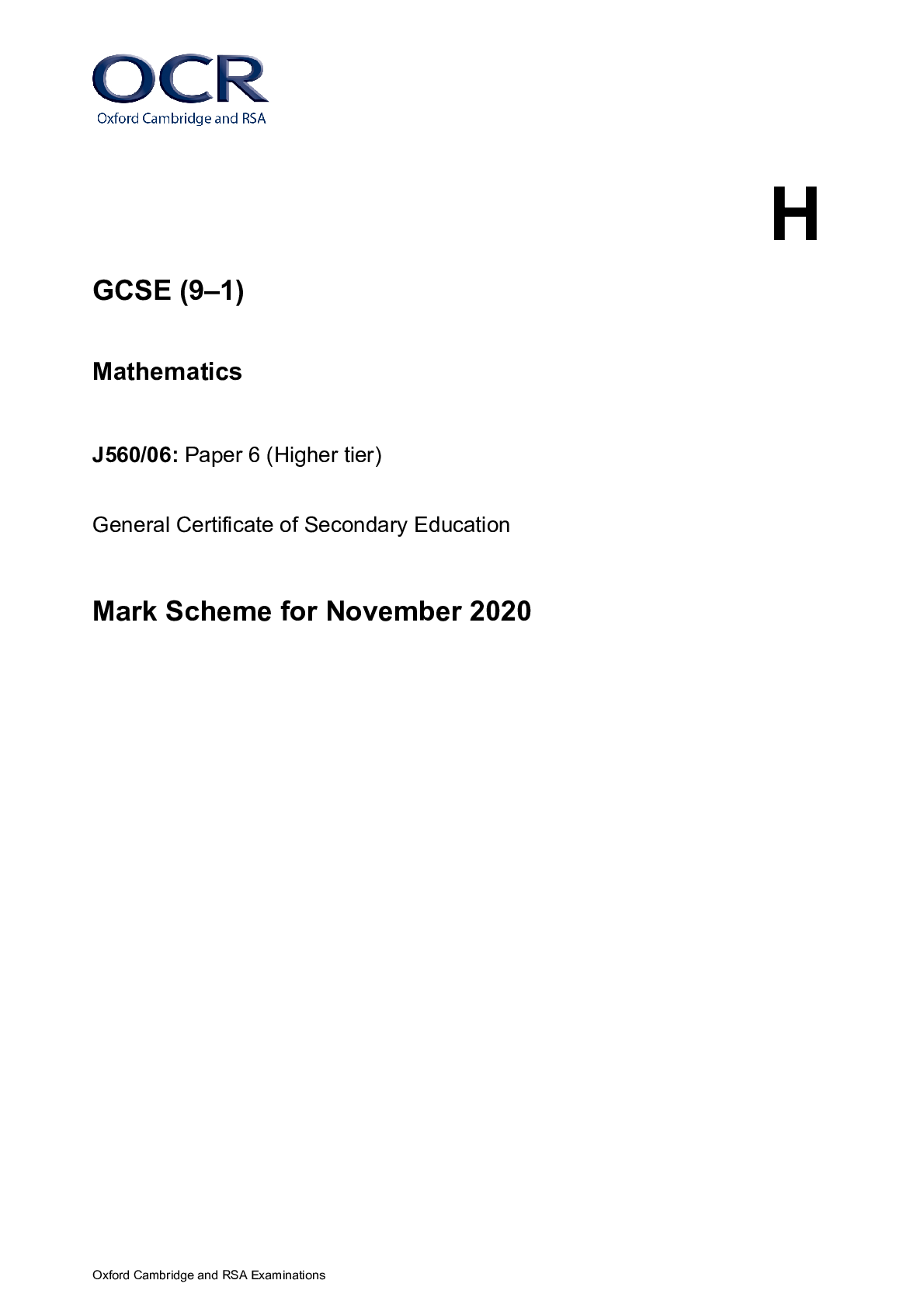
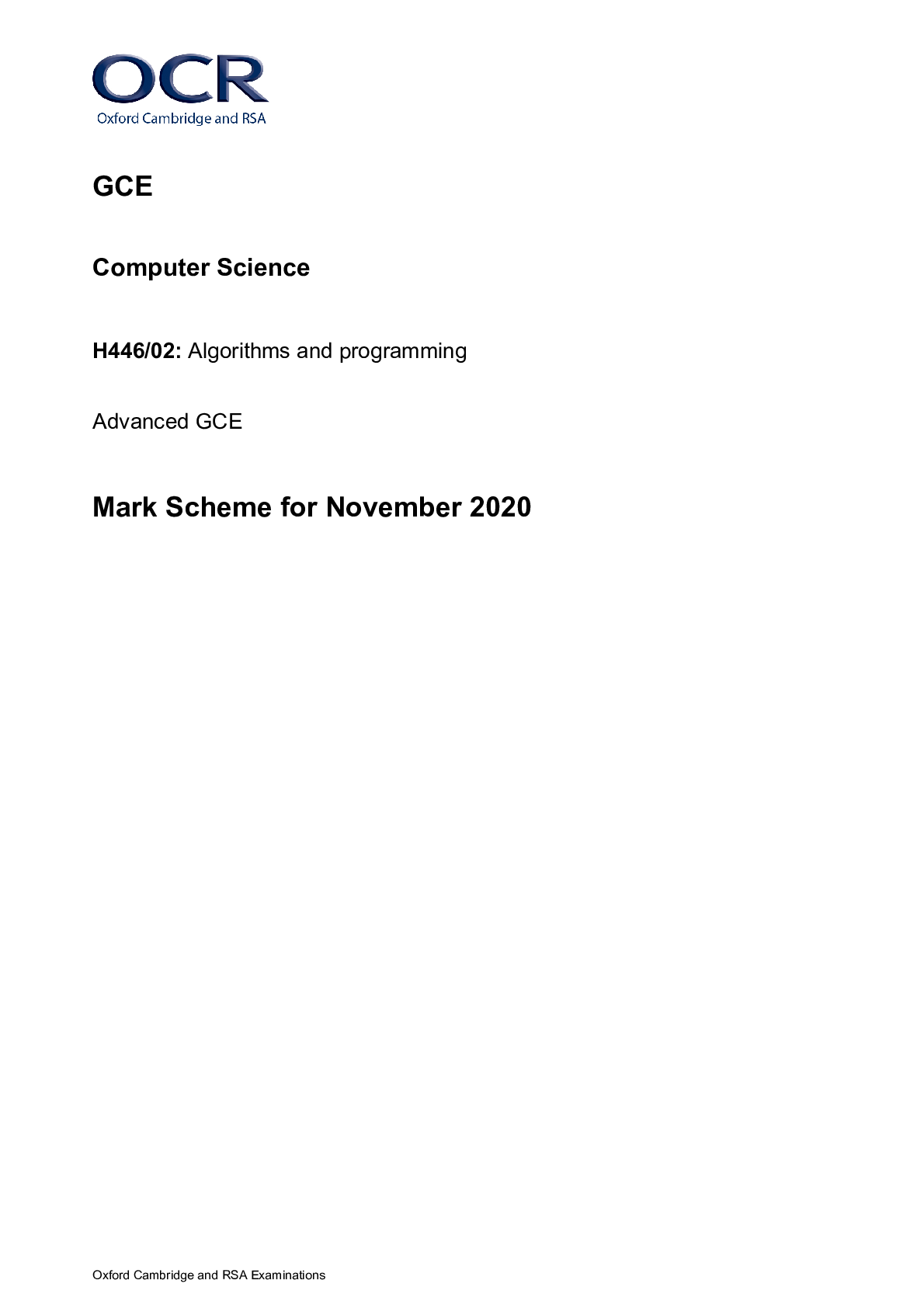
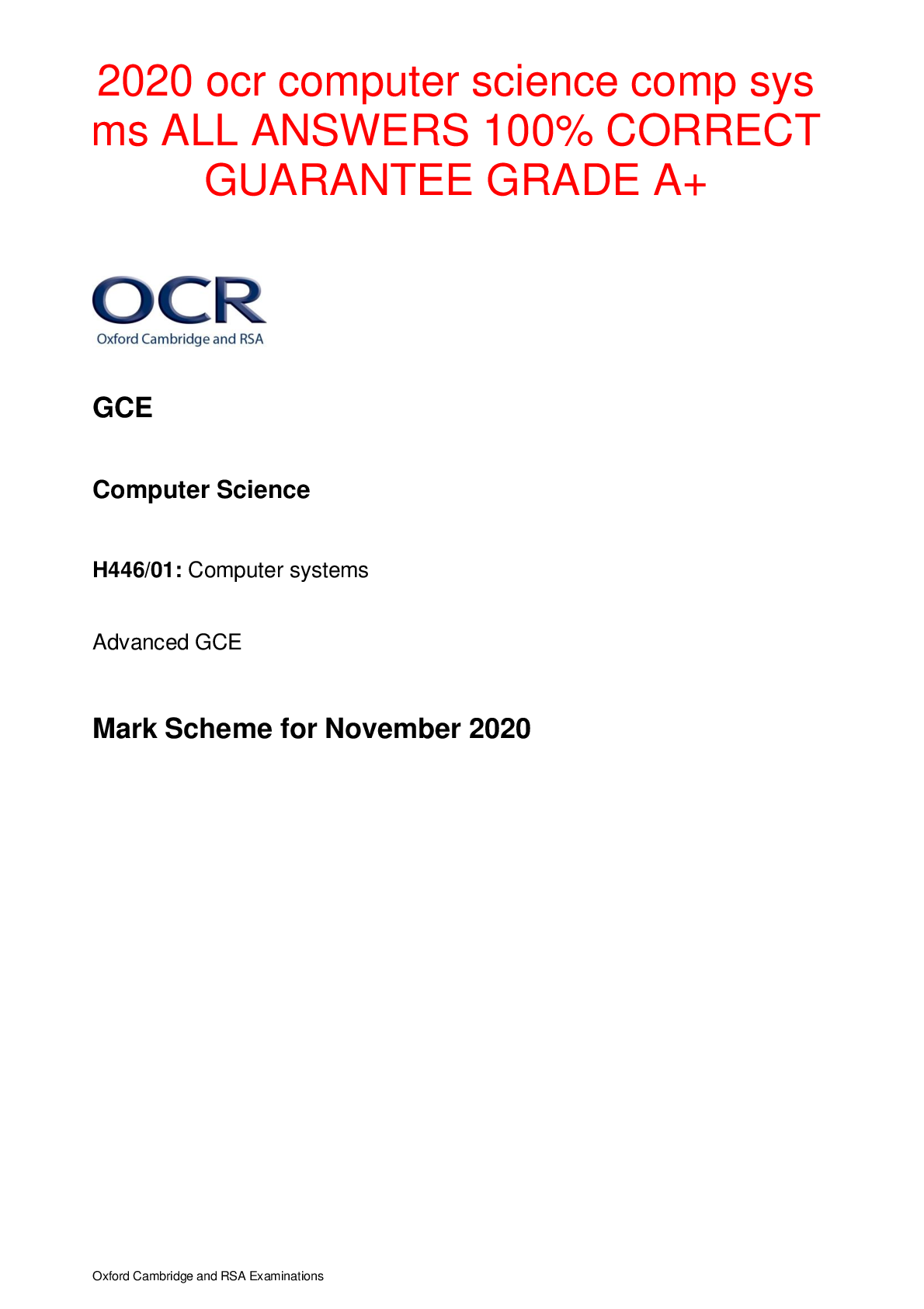

.png)
